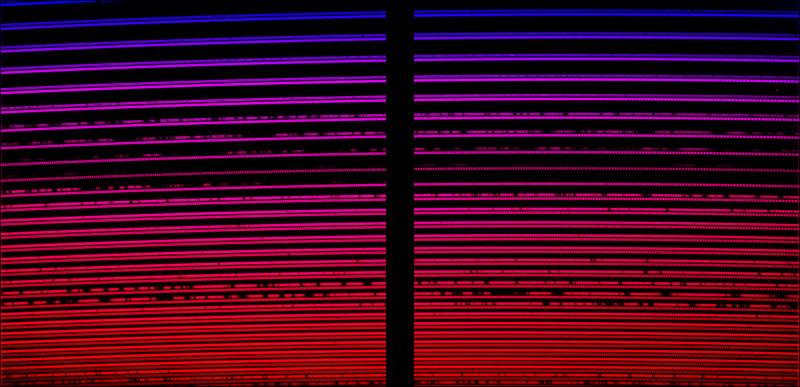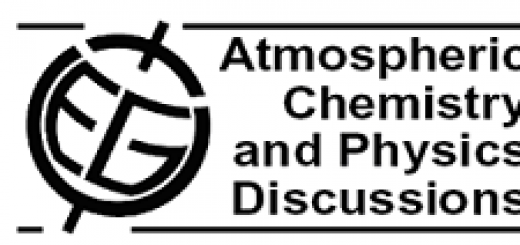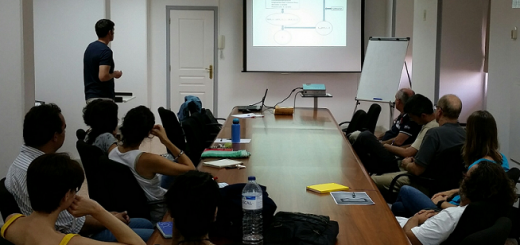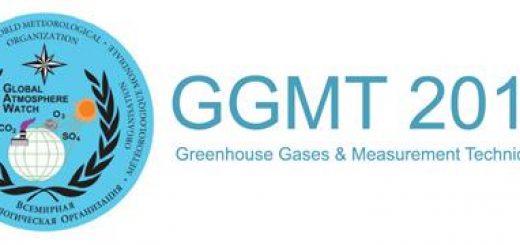CARMENES turns stars into climate sensors
Clic here for spanish version

Image of the EM27/SUN instrument from the COCCON-Spain network observing the Sun, almost aligned with the direction of the 3.5 m CAHA telescope.
As part of the AEMET COCCON-Spain network, Calar Alto has participated in an intensive greenhouse gas measurement campaign. Alongside a daytime atmospheric sensor at the observatory and another one installed at the University of Almería, the CARMENES instrument on the 3.5 m telescope has been used to quantify these gases during the night, feeding data into the Astroclimes algorithm. This is a novel study on global warming and its implications for climate change, carried out in collaboration with AEMET and the universities of Almería and Warwick (United Kingdom).
The light captured by our telescopes is not exactly the same as the light that left the stars where it originated. On its journey to reach us, the light may pass through regions of gas and dust that alter its spectrum. This effect is especially noticeable when light passes through our atmosphere, which, far from being completely transparent, introduces spectral features (its own “barcode”) into the spectra of the stars observed.
These features, known as telluric lines because they originate in our planet’s atmosphere, are often considered a nuisance by astronomers, who must “clean” the spectra measured by their instruments to reconstruct the original signal.
To complicate things further, the exact shape of these telluric lines changes depending on the temperature, pressure, humidity, or chemical composition of the atmosphere. In a way, we can think of telluric lines as encoding information about the current state of the atmosphere into the stellar spectra. In particular, they provide information about the main greenhouse gases (GHGs) such as carbon dioxide (CO₂), methane (CH₄), and water vapor (H₂O).
Thanks to this, what is a by-product for astronomers becomes very useful for studying the concentration and evolution of GHGs in our planet, the main drivers of global warming (i.e., the rise in Earth’s average temperature). But to do this, we first need to learn how to best exploit the telluric lines, and that’s exactly what has been done at Calar Alto over ten days and nights in July 2025.
The atmospheric measurement campaign, titled “Combination of atmospheric column retrievals of CO₂ and CH₄ from Astroclimes with co-located COCCON measurements”, took place in Almería from July 7 to 16, 2025, in collaboration with the Calar Alto Astronomical Observatory, the University of Almería (UAL), the University of Warwick (UK), and the Spanish Meteorological Agency (AEMET).
The main goal is to demonstrate the unique potential of combining solar (daytime) and stellar (nighttime) remote sensing measurements to study the carbon cycle, the role of GHGs in the current global warming context, and to strengthen observation systems for these gases.
Specifically, this campaign took advantage of the unique opportunity to measure the full daily cycle (day and night) of GHGs at the Calar Alto observatory, through stellar observations with the CARMENES spectrograph on the 3.5 m telescope and solar observations with a low-resolution Fourier Transform Infrared (FTIR) spectrometer (portable model EM27/SUN) belonging to the COCCON (COllaborative Carbon Column Observing Network)-Spain network.
Nighttime atmospheric columns of CO₂ and CH₄ were derived from observations taken with the CARMENES spectrograph, processed with the innovative Astroclimes algorithm developed by Marcelo Aron Fetzner Keniger from the Astronomy and Astrophysics group at the University of Warwick. Thanks to its infrared channel, CARMENES is a high-resolution spectrograph ideal for precisely detecting GHG lines and feeding the Astroclimes algorithm developed at Warwick. According to Fetzner Keniger, “If we manage to calibrate the algorithm using the COCCON measurements, Astroclimes could provide a new network to monitor GHG abundances, complementing existing networks with nighttime data.”
The GHG daytime cycle was observed by an FTIR instrument from the COCCON-Spain network, also located at Calar Alto. This instrument is capable of retrieving column-averaged concentrations of various GHGs. These daytime observations will, in turn, be used to calibrate the Astroclimes algorithm. The “high-altitude” observations (around 2100 m above sea level) were complemented by a second instrument from the COCCON-Spain network located at the University of Almería, aimed at capturing the full atmospheric column down to sea level.
For the University of Almería (UAL), this project represents a major commitment to characterizing the local atmosphere, where studying these GHGs is essential. For the UAL research group, which has been studying atmospheric physics for decades, participating in a project of this magnitude reinforces its commitment to energy resources and their impacts, which are essential to our environment. “We are grateful to AEMET for including us in such an important project, which we believe will be a reference point in the energy transition,” says Joaquín Alonso Montesinos, Full Professor, head of the research group “TEP165: solar energy resources, climatology, and atmospheric physics,” and UAL representative in the COCCON-Spain project.
“The national COCCON-Spain network aims to address the clear lack of GHG atmospheric observations in Spain by establishing a network of stations to measure them at a national scale. One of the main objectives of the COCCON-Spain network is to improve current knowledge of GHG sources and sinks, thus contributing to the development of mitigation and adaptation strategies against climate change,” highlights Omaira García-Rodríguez (AEMET-CIAI), network coordinator.
Jesús Aceituno, director of the observatory, concludes: “Calar Alto, with its photovoltaic plant and biomass boiler, proudly upholds its commitment to sustainable energy. These greenhouse gas detections made with CARMENES show that an astronomical observatory can also help monitor the climate of our planet.”

Spectrum of a star captured by the infrared channel of CARMENES
COCCON-Spain is coordinated by AEMET and is part of the project for the modernization of observation networks and the digitalization of production processes for the development of smart meteorological services in the context of climate change (C05.I03.P51). This project is included in the Spanish Government’s Recovery, Transformation and Resilience Plan (PRTR), funded by the resources approved by the European Council on July 21, 2020, to address the consequences of the global COVID-19 pandemic.

The Calar Alto Observatory is one of the infrastructures included in the Spanish Map of Unique Scientific and Technical Infrastructures (ICTS), approved by the Council for Scientific, Technological and Innovation Policy (CPCTI) on March 11, 2022.





